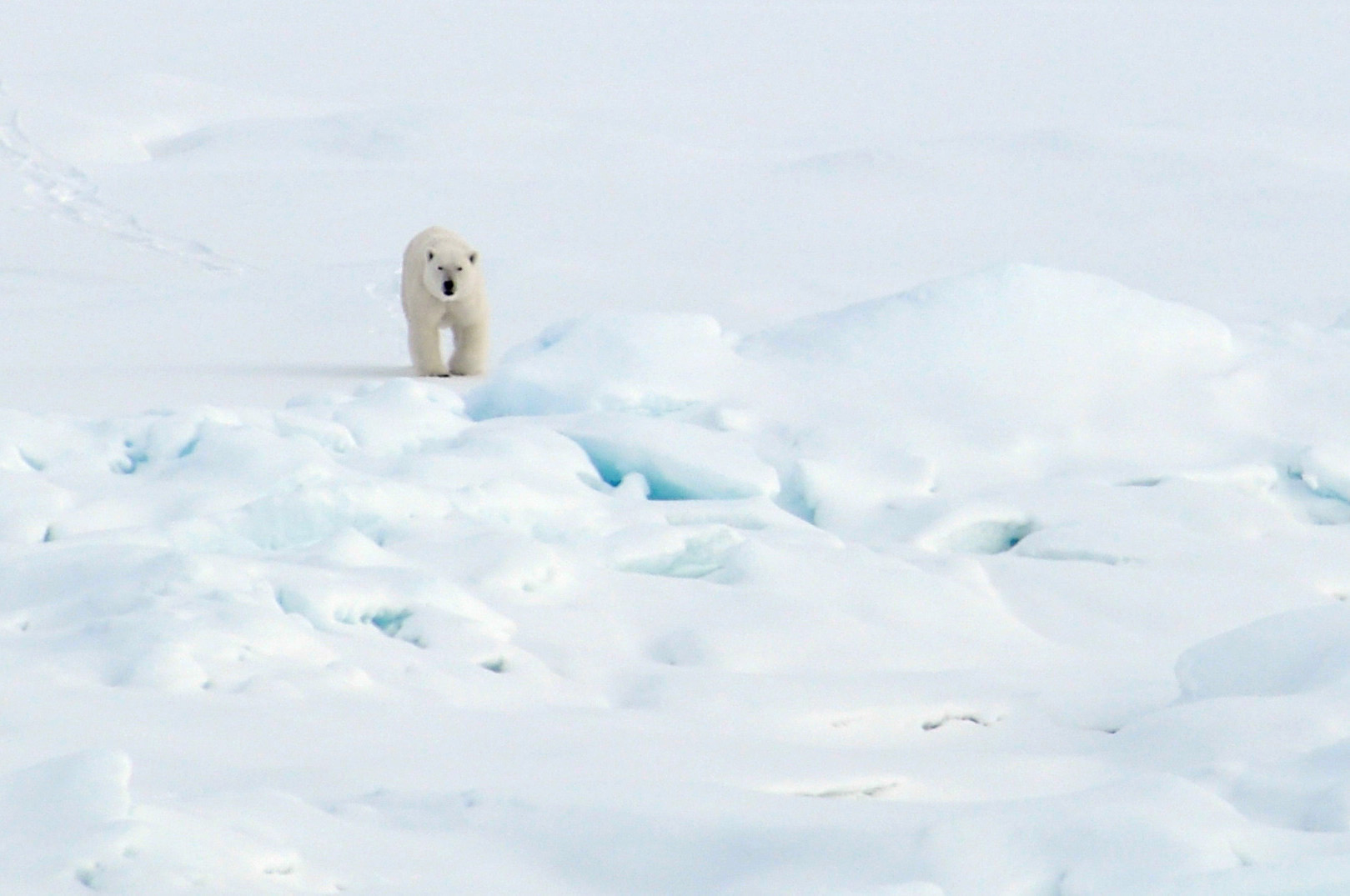Melissa McKinney is one of dozens of UConn researchers at work around the globe studying the effect of climate change on species of all shapes and sizes. To learn more about faculty research on the environment in countries from the American Southwest to the Gulf of Maine, Greenland, and South Africa, go to the UConn Magazine website.

Melissa McKinney is assembling a giant jigsaw puzzle. But instead of using pieces of colored cardboard, she gets to use whales, polar bears, seals, and fish. On top of that, she doesn’t have an already completed picture to tell her what the end result will look like, although she has her suspicions.
McKinney is an assistant professor of natural resources and the environment in the College of Agriculture, Health, and Natural Resources, with a joint appointment in UConn’s Center for Environmental Sciences and Engineering. Her background in ecotoxicology involves the study of how toxic chemicals affect biological organisms. This expertise has led her to an exploration of how global climate change may be playing a role in how various species that call the northern latitudes home are affected by synthetic, or manmade, organic compounds.

“Most of my work involves looking at the top of the food web, at things like polar bears and other marine mammals,” says McKinney. “They tend to have high levels of PCBs, DDT, and other toxins in their systems. Even though these contaminants, called organochlorines, haven’t been used in the Arctic to any extent, they are able to make their way long distances through atmospheric and aquatic pathways. Eventually, they get into Arctic food systems. Tissue samples taken from polar bears across their circumpolar range clearly showed elevated levels of these contaminants, and that is definitely cause for concern.”
The Beaufort Sea polar bears McKinney studies have traditionally dined on ringed seals found on the ice. However, there has been noticeable erosion of the sea ice in that region, and an increasing number of bears are eating whales that have been hunted by indigenous peoples and whose carcasses remain on shore.
“Lately,” says McKinney, “we have been finding a strong relationship between sea ice change and how much of this on-shore food they eat. We think these dietary changes may be important mechanisms that relate to the health of the bears.”

McKinney says that, based on evidence from biopsies of their blubber, these whales may be among the most contaminated marine mammals in the world. The orcas she has her eyes on now are those that are showing up off the coast of Greenland. “The killer whales of the North Atlantic have not been studied as much as those on the west coast, but in the past few years more and more of them have been sighted off Greenland,” she says.
These giant predators may be primarily fish eaters, but recent evidence suggests that at least some of the whales are consuming seals and other whales.
“Killer whales are thought to be very specialized eaters, but these findings raise the issue of whether, under rapidly changing conditions, such as ocean warming, they might actually be much more opportunistic,” says McKinney. “They are voracious eaters, and it doesn’t take many of them to consume a large number of a smaller species, such as seals and other whales. This leads us to wonder if the killer whales everywhere in Arctic waters are beginning to feed on marine mammals, and what the potential impact on those populations may be.”

Every puzzle has large and small pieces, and on the smaller end of the size scale are the prey fish that have traditionally formed a large part of the diets of seals, whales, larger fish, and sea birds. “Changes in prey fish populations have been observed in regions like the Hudson Bay over the past 30 years,” says McKinney. “Arctic prey fish have largely been replaced by subarctic species, and this has led to diet changes in sea birds and marine mammals. We’re looking at the contaminant differences among various types of fish and what that might mean in terms of food quality.”
So the puzzle continues to evolve. All along the food chain, species are exposed to what has been consumed before. And, although McKinney’s research doesn’t extend to the individual at the very top of that chain, there are others who are exploring the diets of the indigenous peoples who inhabit the far north and who hunt and fish for their food.
McKinney says it is her hope that some of her research can be used to support international agreements regarding the use of chemicals worldwide. “If contaminants can reach the Arctic, it means they are present throughout the global food web. It’s really important to me that there is awareness of how human activities in one location can potentially affect other species, even in remote regions of the planet. Saying that we need to be stewards of the Earth isn’t just an idle thought. It’s something we really have to take seriously.”



